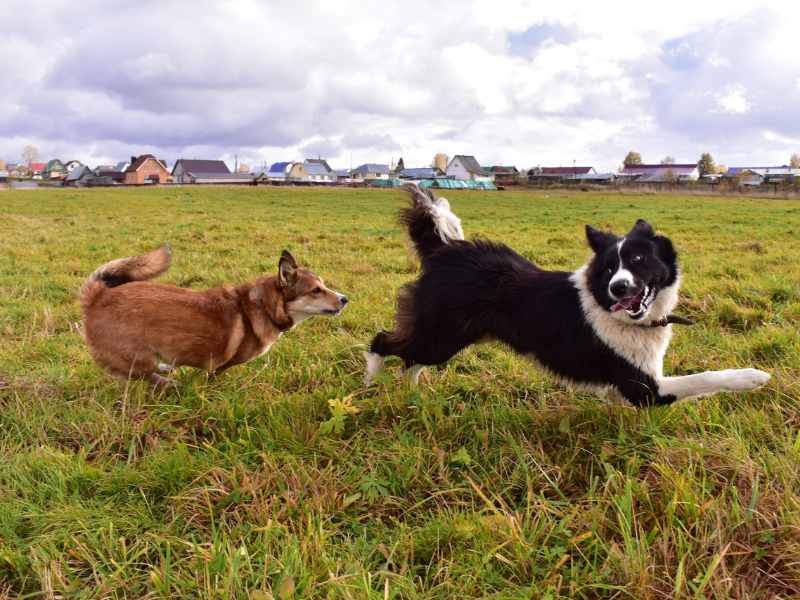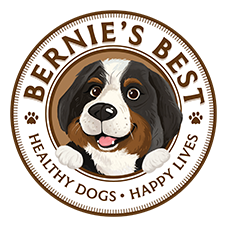You’re thinking about bringing a new dog into your life, but you’re wondering how the dog(s) you already have at home will welcome one. We get that–welcoming a new dog into an already busy house can be wild, but with careful preparation, you can make the magic happen. Here are some of our best tips for helping bring a new dog home, and helping the transition with other dogs be smooth!
Decide What Your Dogs Can Handle
Before introducing a new dog, it’s crucial to understand the personalities and sociability of the dog(s) you already have. Check out how they interact with other dogs when you’re on a playdate or walk. Are they dominant or submissive? Do they play well or tend to get overly excited or aggressive? Understanding these dog traits in your current family member(s) will help you gauge the kind of newcomer that might fit best with your pack. Here are some things to watch for:
- Watch for signs of stress or aggression during interactions.
- Note your dogs’ reactions to different sizes and breeds to gauge comfort levels.
- Consider a professional behavior assessment if you’re unsure.
Preparing Your Home For A New Dog
When you’re bringing a new dog to a house that already has a dog (or dogs), the most important thing to think about is space and maintaining a separate space for each dog. This includes separate beds and, if possible, initially having separate feeding areas to avoid any resource-guarding issues. This setup can help prevent conflict over territory or possessions.
When it comes to safety measures, dog-proofing for a multi-dog household involves securing trash cans, safely storing cleaning supplies, and ensuring no small items are lying around that dogs might chew or swallow. It’s also not a bad idea to have gates or barriers handy to manage the spaces the dogs can access, especially in the early stages of introduction. Your current dog(s) may not love some of the boundaries, but it’s good for an initial introduction, and you can cut down on situations that make the new dog (or even your current dog) nervous.
Choosing the Right New Dog When You Already Have A Dog
Selecting a new dog that complements the existing members of your household is key. Consider the following:
- Temperament: A dog whose energy level matches or balances your current dogs’ temperaments is so important. There may be some issues if you bring a high-energy dog to your otherwise chill home.
- Size and Breed: Large discrepancies in size can lead to unintentional injuries. Similarly, breed-specific traits can influence compatibility. Choosing a Teacup Yorkie may not be a great match if you have three ginormous retrievers.
- Age: An energetic puppy might be too much for an older, more sedate dog, and vice versa. That said, don’t rule that combo out as a younger dog may energize an older dog and an older dog may help a younger dog learn manners and pack behavior.
Introduction Strategies For A New Dog
First impressions matter. Introduce the dogs in a neutral area like a park to minimize territorial instincts. Keep all dogs on leashes and allow them to sniff each other while keeping interactions brief and positive.
Gradually integrate: Once the initial meeting goes smoothly, continue with supervised interactions at home. Gradually increase the time they spend together, monitoring their body language and intervening if tensions rise. The last thing you want to do is have your current dog(s) feel threatened, or scare your new family member before they can acclimate.
Training and Behavior Management
Maintaining consistent rules and training across all dogs is really important. Yes, you may have laxed on some of the rules for your current dogs, and that may make things tough because the new dog doesn’t fully understand why a command stands in one place, but not another. Reinforce commands like sit, stay, and come, which can help manage interactions and prevent conflicts. Plus, it’s never a bad idea to refresh those commands in general.
Behavioral tips when introducing new dogs:
- Reward calm and polite behaviors with treats and praise.
- Be vigilant for signs of aggression or jealousy and address them immediately with a professional’s help if needed.
Monitoring and Adjusting The Gathering
Keep a close eye on how the dogs interact over the first few weeks. Look for signs of anxiety or aggression, and be ready to step back in the introduction process if needed. Adjust your strategies based on their reactions, which might include more structured introductions or separate times in shared spaces. Remember, it’s a change for all involved, so keep watching and adjusting things as you may need.
And also remember, it’s a process. They may be best buds overnight but they may not. Don’t feel like a failure if there’s an issue that doesn’t seem to subside. Consider talking to a trainer or behaviorist if you need to for some additional suggestions and help. Dogs are not much unlike us–they have feelings and preferences, too!
Successfully introducing a new dog into a home with existing dogs requires patience, consistency, and a lot of love. By preparing adequately, monitoring interactions, and adjusting strategies as needed, you can ensure that all your furry friends live together in harmony. The first time you see them all lying in a big dog pile full of furry love, you’ll know it was worth it!


